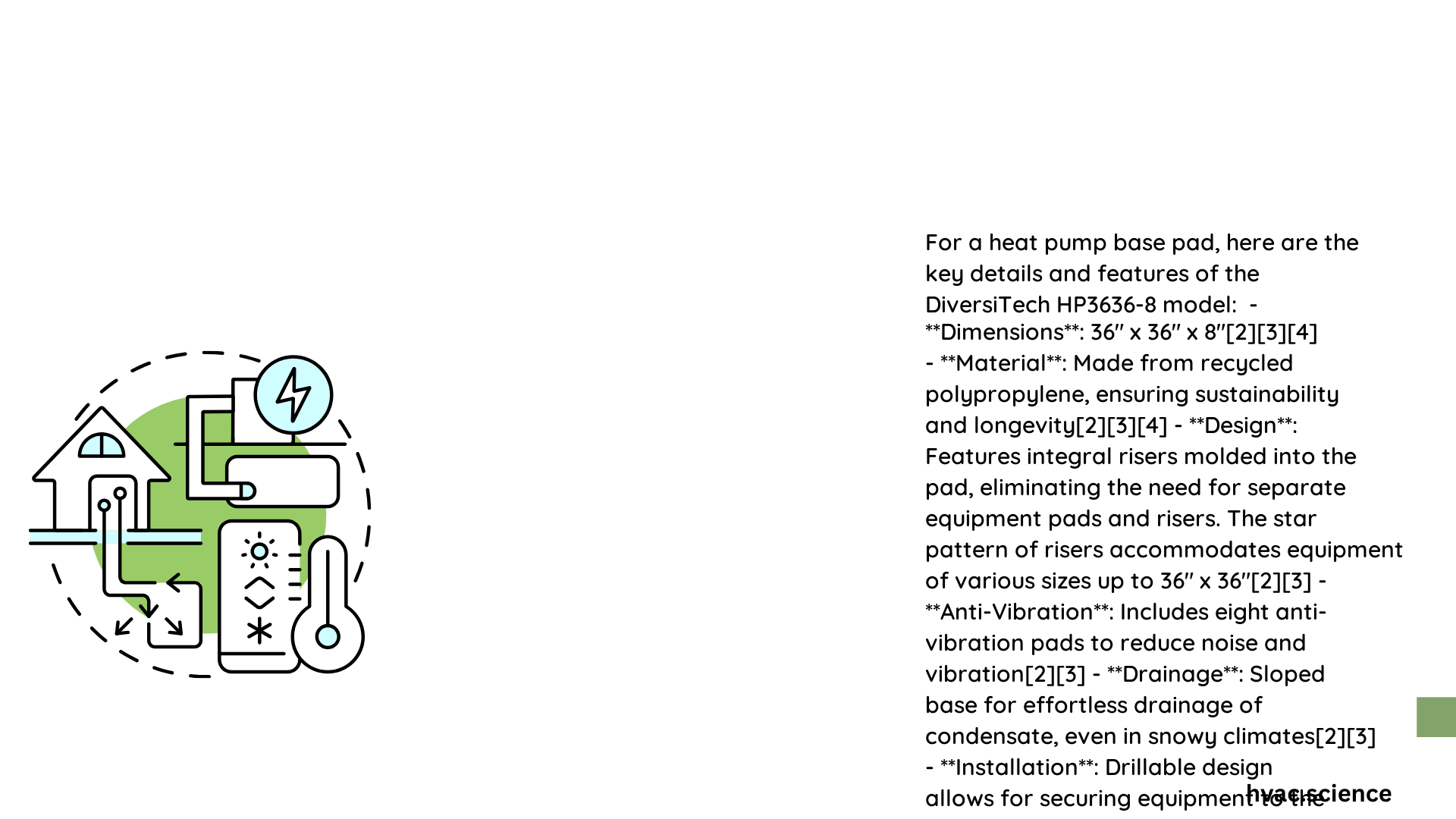A heat pump base pad is a critical foundation that supports and protects your heat pump system, ensuring stable performance, proper drainage, and protection from environmental challenges. The right base pad prevents moisture accumulation, reduces vibration, and extends equipment lifespan by providing a level, elevated surface that shields the unit from ground-level complications.
What Makes a Heat Pump Base Pad Essential?
Heat pump base pads serve multiple crucial functions beyond simple equipment support. They create a stable platform that:
- Prevents direct ground contact
- Facilitates proper drainage
- Reduces mechanical vibrations
- Protects against moisture and soil erosion
- Enhances overall system performance
What Materials Work Best for Heat Pump Base Pads?
Comparative Material Analysis
| Material Type | Durability | Cost Efficiency | Installation Complexity |
|---|---|---|---|
| Plastic Pads | High | Moderate | Low |
| Concrete Pads | Very High | Low | High |
| Gravel Foundations | Moderate | High | Moderate |
Plastic Pad Advantages
Plastic heat pump base pads offer remarkable benefits:
- Lightweight construction
- UV and weather resistance
- Quick installation
- Minimal maintenance requirements
- Consistent performance across temperature ranges
How to Choose the Right Base Pad Dimensions?
Selecting appropriate dimensions involves considering:
- Heat Pump Unit Size: Measure your specific equipment
- Local Climate Conditions
- Drainage Requirements
- Elevation Needs
Recommended Dimension Guidelines
- Standard Residential Units: 36″ x 36″ x 2-4″
- Cold Climate Installations: 36″ x 36″ x 8″
- Commercial Systems: Custom sizing based on equipment specifications
What Installation Techniques Ensure Optimal Performance?
Preparation Steps
- Clear and level the installation area
- Remove vegetation and debris
- Compact the ground surface
- Ensure proper drainage slope
- Check for potential water accumulation zones
Installation Checklist
- [ ] Verify ground levelness
- [ ] Use appropriate leveling tools
- [ ] Apply anti-vibration padding
- [ ] Secure heat pump unit
- [ ] Check final elevation
How to Maintain Your Heat Pump Base Pad?
Regular maintenance involves:
- Periodic level checks
- Clearing debris around the pad
- Inspecting for potential cracks or settlement
- Ensuring consistent drainage
- Monitoring pad condition annually
Expert Tips for Long-Term Performance
- Choose materials compatible with local climate
- Consider professional installation for complex scenarios
- Invest in quality materials over cheap alternatives
- Prioritize drainage and elevation
- Perform annual inspections
Technical Specifications to Consider

- Minimum Elevation: 2-4 inches above ground
- Load Bearing Capacity: Minimum 500 lbs
- Material Resilience: Temperature range -40°F to 180°F
- Drainage Slope: Minimum 1-2% gradient
Cost Considerations
- Plastic Pad: $100-$250
- Concrete Pad: $300-$600
- Gravel Foundation: $200-$450
Professional Recommendations
Consult HVAC professionals for site-specific recommendations, especially in regions with extreme weather conditions or unique terrain challenges.
Final Insights
A well-designed heat pump base pad is an investment in your system’s longevity and performance. Careful selection, proper installation, and regular maintenance ensure optimal operational efficiency.
